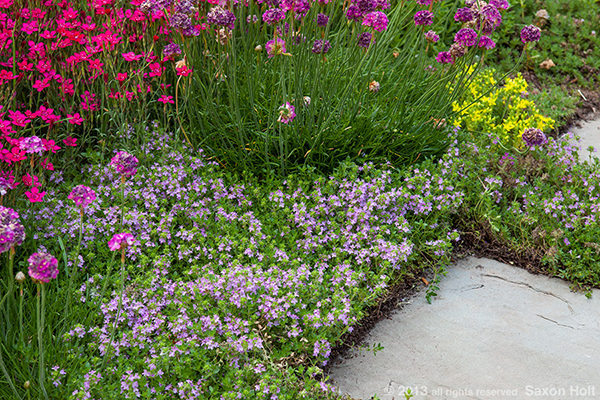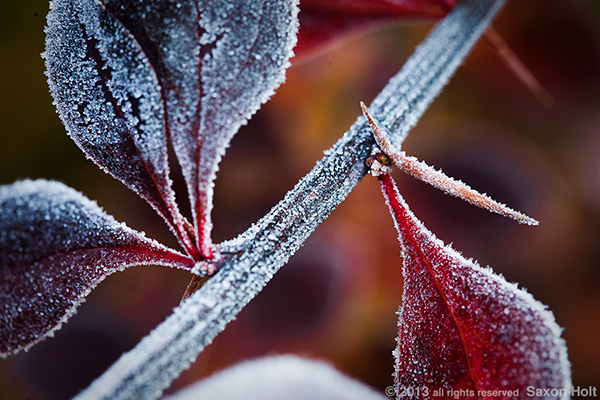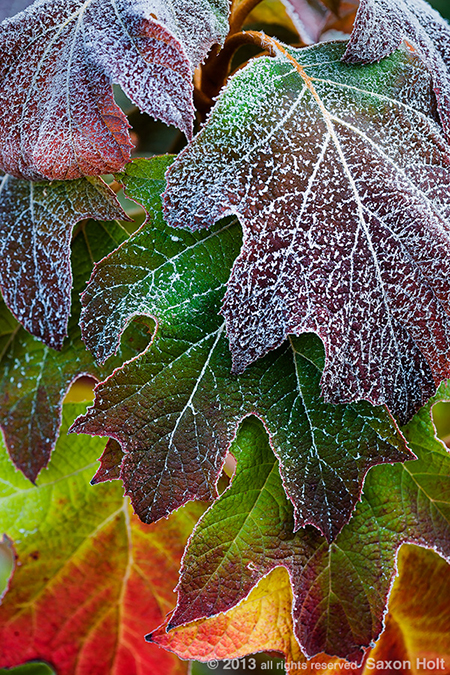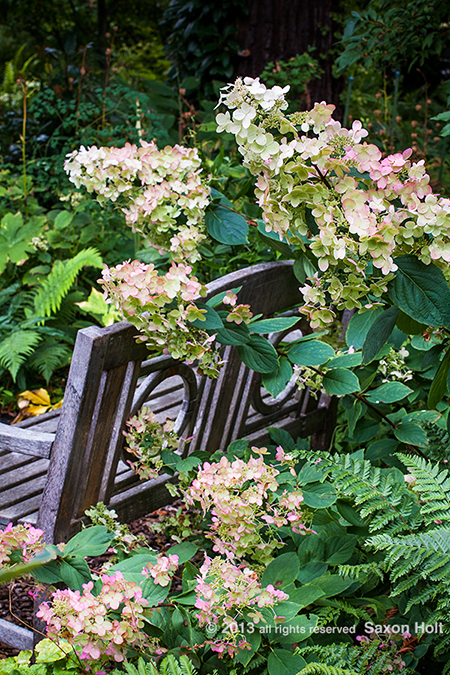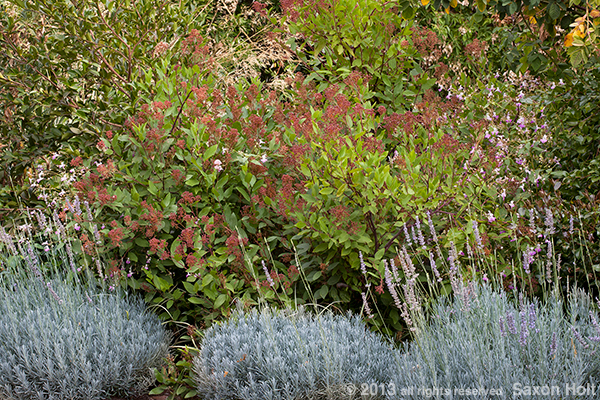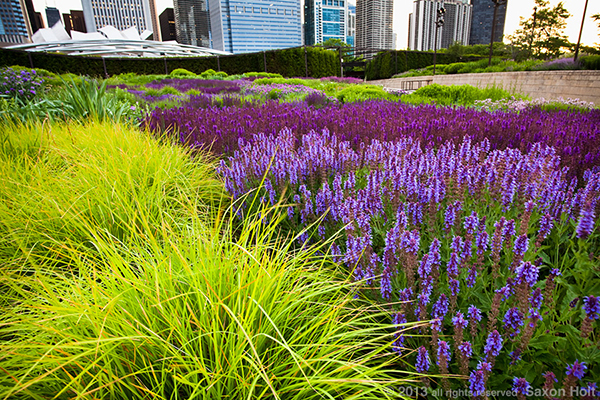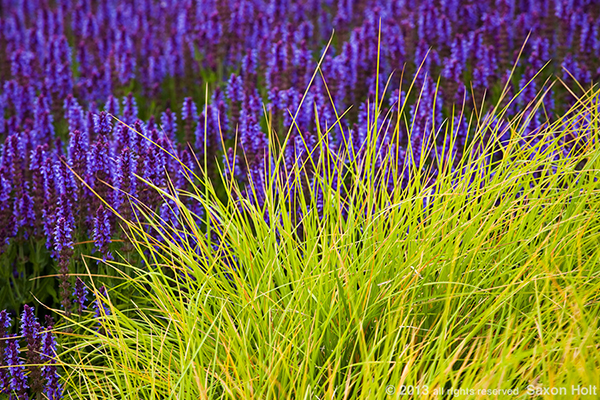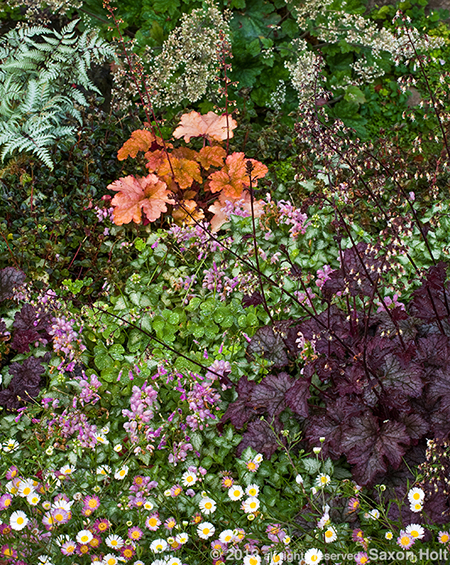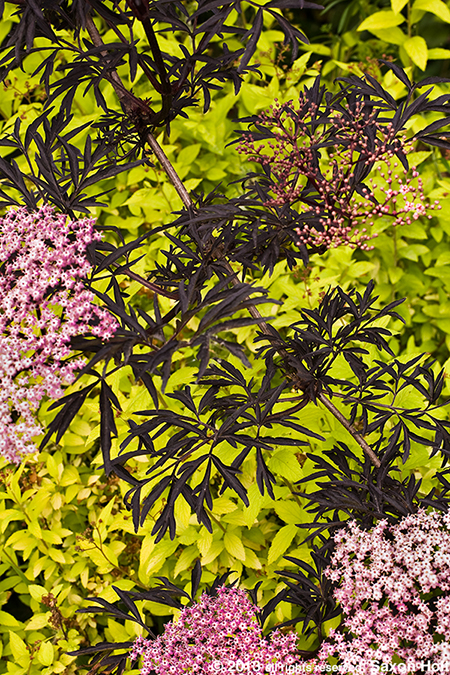When you set out to photograph a garden, don’t miss the details and vignettes. Often the essence of what you see can be distilled down to distinct details, details that tell the story of what you feel.
This is the last lesson in “Seeing the Garden”, chapter two of the PhotoBotanic Garden Photography Workshop. Throughout this chapter I have been talking about seeing the garden with a camera, how to compose, how to use focal points, space and shape, points of view, leading lines when you go looking for photos.
As you look, as you consciously look for ways to capture what you see with a camera, look for the details and vignettes that are pieces of the puzzle. Don’t forget that you are likely to share your photos as an album, gallery, or group share of some kind (more in chapter four on Sharing). Tightly composed shots often convey an intimacy and spotaneaity that is only hinted at in a wide shot.
I am not talking here simply about macro, close-up shots. This is another subject and will also get its own lesson, but the vignettes I want you to look for are combinations of only a very few elements that you combine in the camera frame. Show a detail you see in context of the garden around it, find a vignette.
These photos CAN be macro shots, such as this frosty Berberis leaf:
But, the composition and framing uses multiple elements such as the frost and finding an angle in the garden that brought in the gauzy fall color. Then I let the camera viewfinder help me frame with good balance, use of shapes and negative space, leading lines, etc. – all things you have mastered from earlier lessons. (right ? 😉 )
As long as I am writing this on a cold winter day I will use another example of a detail shot that is not simply a macro.
This Oak-leaf Hydrangea is not simply a picture of a leaf, it stacks up 3 layers (remember the rule of thirds ?) in a combination of elements that tell a story, not just a story of leaf shape or the frost, but also of how the plant grows, how it turns color.
Always, always, remember to use the entire frame of your frame. This was lesson 1.1 and you may be tired of hearing this repeated every lesson, but presume you are going to share this photo, presume it is something others will look at, presume it is more than eye candy. It has a story. The better you get at seeing the garden with your camera, the more your story will come through.
Imagine cropping the top off that hydrangea photo. You would no longer see how the leaves grow. Take a wee bit off the bottom and you no longer see the leaf shape in that third row. These are elements of MY story. Your results may vary.
Let’s jump to summer and find vignettes in a garden. This is in the magnificent O’Byrne garden at Northwest Garden Nursery in Oregon.
The wide view is nicely composed, uses all the tricks we learned in this chapter, but doesn’t quite get the essence of what I was feeling. I was giddy here, seeing the bench at the end of this woodland walk enveloped by the Hydrangea. How very cool, I thought, to use this abundantly flowering shrub to shelter the bench.
The vignette tells a simply story and brings intimacy to the scene.
Often there will be something in the garden that you are seeing and you think the camera will see too. But if that something is not the entire story of your particular composition, your viewer will not see exactly what you see.
Here in the shrub border in my own garden.
I remember walking down my driveway one mid summer day falling in love once again with Ceanothus ‘Marie Simon’ because of its durable and multifaceted beauty. It flowers in early spring, provides a drought tolerant backbone to my shrub border, AND its seed pods are downright stunning.
The seedpods.
But not a macro close-up, the red-brown seeds are seen on purple stems with luscious green foliage, and the soft silver blue of the lavender hedge. Now that is a vignette. A garden picture with a simple story that is hard to miss.
When I first went to the Lurie garden in Chicago’s Millenium Park I was overwhelmed.
My blog post was Photo Overwhelm and I remember very consciously telling myself to find a theme or nothing would come of the shoot, it would be a mismash of grab shots hoping something would be distinctive.
I decided to use color, particularly the harmonious blue Meadow Sage (Salvia x sylvestris) and yellowish foliage of Autumn Moor Grass, Sesleria autumnalis.
Two elements, two shapes, two colors, one detail – getting to the essence.
And just because every rule can be broken, I will include a photo I consider a vignette, a small section of a larger garden story; but is NOT simply a few elements. In this tapestry of groundcovers in my friend Maile Arnold’s garden, the detail, the simple message is ‘tapestry’.
It is not meant to be a picture of any one plant. There are eight. They combined to my eye as one idea, one detail, a vignette of the garden that is part of a larger story of the garden. A good garden has multiple stories to tell, and as you tell your own, try to distill each idea into a vignette to accompany the ‘big picture’.
See the garden through your camera’s eye. And fill its frame.
The next chapter is Think Like a Gardener and we start to look for themes. We are all garden lovers here, we all bring certain expertise and bias. Let’s learn to use those assumptions to develop a distinctive style, our own voice as we tell stories with the camera.
Bonus photos for the e-book will include:
I think there is something from all 12 lessons so far in this photo. Details later ….


